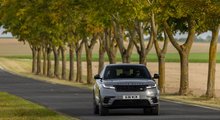Range Rover's adaptive cruise control
February 26 2021,

In recent years, the cruise control systems that we have always known have been offering an additional function: adapting to the speed of the vehicle in front of us.
Some drivers love this function, others less so. Beyond that, the question is when and under what circumstances it can be used. Rather than criticize it, it's better to see how it can help us and make our experience behind the wheel safer.
Poor visibility conditions
We always prefer to take the road when the weather conditions are optimal, but this is not possible all the time. For example, we sometimes find ourselves on the highway in heavy traffic when visibility is poor due to rain, sunshine or other factors. In these moments, it's really interesting to be able to count on the adaptive cruise control of the Range Rover, because if we can't see what's happening in front of us at the wrong time, the vehicle will intervene in our place to keep us safe.
Taking a call
You can't use your cell phone while driving, but you can still make and receive calls through the vehicle's hands-free system. When we do, we can keep our eyes on the road and our hands on the wheel, but our concentration is not the same. Now's the perfect time to activate Adaptive Cruise Control, because if you get distracted just as it brakes hard in front of you, your Ranger Rover will be there to save your skin.
The wrong way around
We often think of cruise control as a tool used only on the highway, but that's not the case. In fact, on a country road where traffic is going the wrong way, it can be interesting to use it to maintain a steady pace. And it's even more relevant to do so when a vehicle is in front of you, because since you can't really pass it (or more difficult to do so), it allows you to always keep a safe distance. And if the vehicle decides to turn without indicating it to us with its turn signal, our vehicle will recognize it long before us and apply the brakes.
As you can see, Adaptive Cruise Control has its purpose. It's simply a matter of finding out when it can "adapt" to our driving style, and vice versa.





